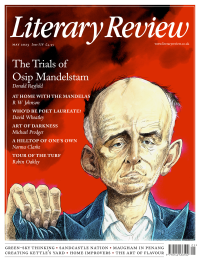Lucy Dale
Fear & Loathing in Veracruz
This is Not Miami
By Fernanda Melchor
Fitzcarraldo 160pp £12.99
From the outset, This is Not Miami stresses the instability of narrative. For Fernanda Melchor, stories, however ‘real’, are first and foremost a product of language and memory. In an author’s note, she states that one should not fear subjectivity or refrain from shaking up ‘the narrative elements’ if it allows one to find the ‘most profound meaning’ of events. Melchor proves this thesis across the twelve stories that make up this devastating collection. These are stories grounded in real events and real testimony, but they are intended to take the reader beyond what mere ‘reality’ has to offer.
The stories are set in and around the Mexican city of Veracruz and spread across three sections: ‘Lights’, ‘Fire’ and ‘Shadows’. The first includes tales in which the same events and places are interpreted from multiple perspectives. Children, fishermen, pimps, dockworkers, refugees and lawyers all get their say on strange lights in the sky (UFOs, witches, aircraft?); also given attention are the murder of two young children by their mother (insane, high, vengeful?) and the evacuation of prison inmates for a film (opportunity, con, abuse?). ‘Fire’ deals more explicitly in horror, focusing on a man burned alive as an act of vigilante justice and a young woman apparently possessed by Satanachia, Satan’s ‘right-hand man’. The final section deals with the hidden underbelly of a city torn apart by drug gangs, in particular the merciless Los Zetas. Melchor offers a portrait of a city in which almost no one is untouched by the narcotics trade, from the supermarket cashier forced to run an illegal credit card to the teenage clubber made to witness a brutal assault and the reluctant lawyer solicited by criminal gangs. Violence is everywhere in this collection: men groan as their limbs are cut away, women are drowned and mutilated, the devil is let loose.
Melchor uses these stories to draw attention to the social, economic and political realities of Veracruz. Her characters face almost insurmountable odds and the spaces between reality and fantasy, naivety and suspicion, hope and hopelessness are repeatedly laid bare. A young boy who once dreamed of joining the

Sign Up to our newsletter
Receive free articles, highlights from the archive, news, details of prizes, and much more.@Lit_Review
Follow Literary Review on Twitter
Twitter Feed
Russia’s recent efforts to destabilise the Baltic states have increased enthusiasm for the EU in these places. With Euroscepticism growing in countries like France and Germany, @owenmatth wonders whether Europe’s salvation will come from its periphery.
Owen Matthews - Sea of Troubles
Owen Matthews: Sea of Troubles - Baltic: The Future of Europe by Oliver Moody
literaryreview.co.uk
Many laptop workers will find Vincenzo Latronico’s PERFECTION sends shivers of uncomfortable recognition down their spine. I wrote about why for @Lit_Review
https://literaryreview.co.uk/hashtag-living
An insightful review by @DanielB89913888 of In Covid’s Wake (Macedo & Lee, @PrincetonUPress).
Paraphrasing: left-leaning authors critique the Covid response using right-wing arguments. A fascinating read.
via @Lit_Review